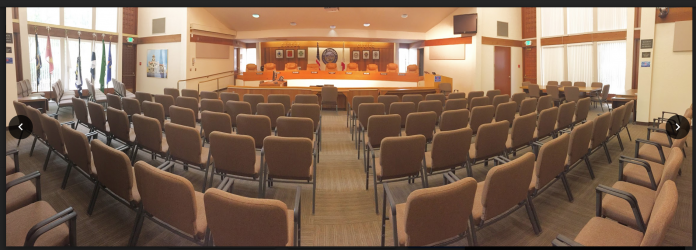Thirty years is a long time, but to tack on another seven for needed upgrades to City Hall, that was tough amidst peeling wallpaper, dangling blinds and worn out floor covering once trod on by a motorcycle driven by a new city council member.
Now Gilroy’s seat of government has a clean new look inside and is just about up to snuff following a $320,000 interior facelift.
Coming soon are more improvements, at more cost, in high-tech amenities that make life easier for the public, elected officials and scores of employees.
Mayor Roland Velasco said Tuesday he is “happy” with work so far, but more is planned and all of it has been “a long time coming,” since first approved in 2007.
Like other cities, the recession hit Gilroy hard; pay hikes were frozen, more than 40 employees lost jobs and projects such as the City Hall upgrade stalled.
It was not till last April that things improved and the city council re-approved upgrades to the Rosanna Street facility, which opened in 1980.
The building was new so long ago that only two of the seven city council members listed on the dedication plaque in the lobby are still alive.
They are former Mayor Roberta Hughan and former City Councilman Brian Cunningham.
Perhaps the most unusual arrival for a meeting was when physician Dr. Peter Arellano was first elected to the council, and, in celebration, drove his monster motorcycle into the lobby.
Most planned work on the building, including all major upgrades, were completed months ago by Everlast Builders, Inc., under the direction of Gilroy Facilities Superintendent Walter Dunckle.
The rest is on the way, according to Joe Kline, the city’s public information officer, who added that new video cameras and supporting equipment were installed last year.
Items still on the way, “Are not technically part of the remodel project, but are part of the Council Chambers upgrade projects that our I.T. Dept. is heading up,” he said.
They include large-screen monitors and upgrades to the audio system in the council chamber that, “Will make it easier for the public attending meetings to see and hear the proceedings,” he added.
The cost of those upgrades has not been finalized.
Before the current location, city offices and council chambers were in the Sixth Street auditorium. Before that they were in what is now referred to as Old City Hall at Sixth and Monterey streets.
Those who work inside today’s City Hall apparently appreciate the recent improvements.
“Staff seem to be happy with the way City Hall now looks,” Dunckle said.
Kristi Abrams, community development director, said the upgrades “Have been well received, improved the professionalism of the atmosphere and have already proven their worth with flexibility in the Council Chambers.”
She was referring to perhaps the single most visible upgrade—moveable seating in the city council chambers.
In the place of the old, fixed auditorium-style seating, the upgrade brought in single seats that couple and uncouple easily and are not attached to the floor.
That allows the room to serve more as a multipurpose space that can be arranged based on needs. The seating capacity is still 130.
For a community strategic planning session last year, for example, tables arranged in U-shapes and surrounded by chairs filled the room and provided a better setting for that kind of event, according to Kline.
The seats could then be easily reconfigured for regular city council, planning commission and other meetings.
The single-story, 27,100-square-foot building was also given new floor coverings, and old wallpaper was removed and replaced by a coat of stucco and new, off-white paint. Large, acoustic panels and new blinds were also installed in the council chamber.
Funds for the upgrades were set aside over many years, according to Dunckle.
“All City Hall departments are charged each year for maintenance and improvements,” he said.















